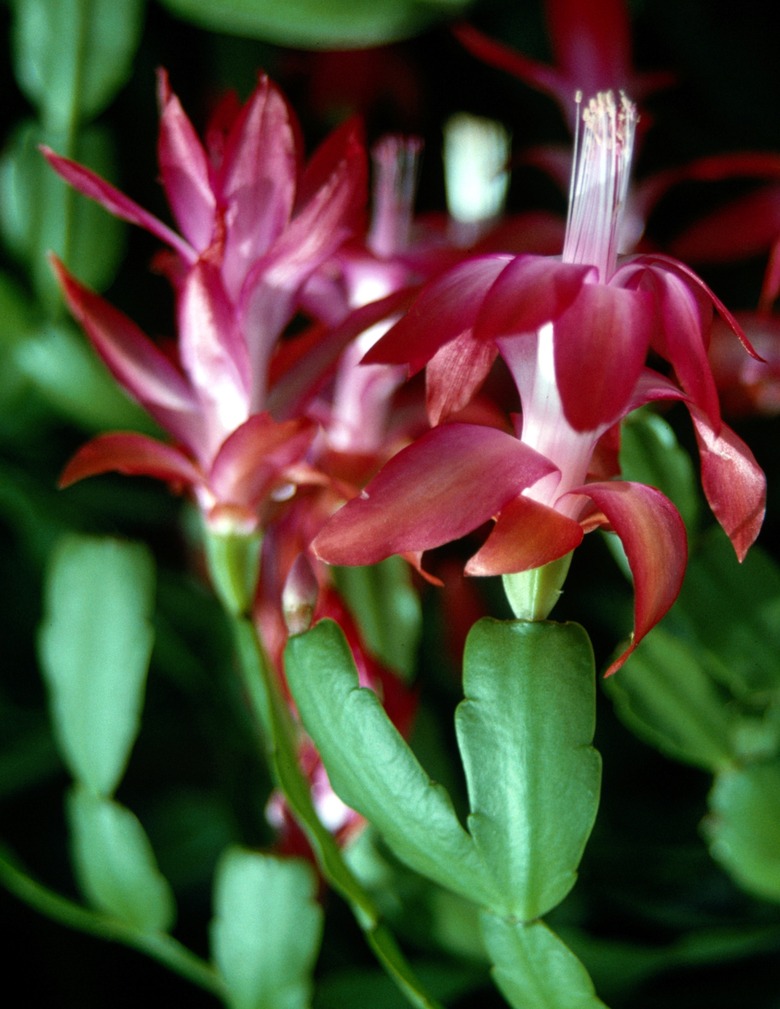Why Is My Christmas Cactus Falling Apart?
Christmas cactus (Schlumbergera truncata) is a low-maintenance plant native to Brazil that produces winter blooms in shades of pink, white, orange and red. A Christmas cactus that is falling apart, with breaking stems and dropped flower buds, may be suffering from improper care, a disease or pest infestation.
Christmas cactus (Schlumbergera truncata) is a low-maintenance plant native to Brazil that produces winter blooms in shades of pink, white, orange and red. A Christmas cactus that is falling apart, with breaking stems and dropped flower buds, may be suffering from improper care, a disease or pest infestation.
Climate Conundrums
The move from a greenhouse or nursery to a home can be traumatic for a new Christmas cactus, especially in winter when indoor humidity levels are low. Even a subtle temperature and humidity change can stress the plant, causing it to suddenly drop its flower buds. Be patient and give the plant time to gradually acclimate to its new environment. If the Christmas cactus is flowering, place it in a spot with bright, indirect light, ideally with daytime temperatures around 70 degrees Fahrenheit and nighttime temperatures around 60 to 65 F. A Christmas cactus does not tolerate frost and may only be grown outdoors in U.S. Department of Agriculture plant hardiness zones 10 through 12.
Baneful Bugs
Mealybugs may attack a Christmas cactus, causing the plant to become stressed and limp. In severe infestations, the segmented pads and flowers may start to wither and die, dropping from the plant, and the plant may wilt or stop growing. The whole plant may seem to fall apart and die. A sticky substance, called honeydew, may be present, which attracts a black sooty mold. Check where the pads join and leaf undersides for the pests, which form cottony white colonies. Remove mealybugs by rubbing them off with a cotton swab dipped in rubbing alcohol.
- Christmas cactus (Schlumbergera truncata) is a low-maintenance plant native to Brazil that produces winter blooms in shades of pink, white, orange and red.
- A Christmas cactus that is falling apart, with breaking stems and dropped flower buds, may be suffering from improper care, a disease or pest infestation.
Rot Ruin
Numerous kinds of rot, including basal stem rot, soft rot, phytophthora root rot and pythium root rot, may attack Christmas cactus, causing plant tissue to die and drop from the plant. A plant suffering from rot may show lesions at the base, and they may eventually wilt, collapse and die. If your Christmas cactus still has healthy white roots, you may be able to save it by trimming off decayed roots and repotting the plant in a clean, new pot with fresh sterile potting soil. If no healthy roots remain, it's best to throw the plant out.
Maintenance and Moisture
Waterlogged soil, particularly in the winter, can cause root rot, while drought can cause the plant to dry out and wilt, dropping pads and flower buds. Water the Christmas cactus regularly throughout the growing season, allowing the soil to almost dry out between each watering. Reduce watering in the fall until new growth appears in spring. Use a well-draining potting soil, such as a mixture that is 1 part potting soil, 1 part sharply draining sand or perlite and 2 parts peat moss. A plant that continually wilts despite proper cultural care should be repotted in a slightly larger pot, advises Purdue University.
- Numerous kinds of rot, including basal stem rot, soft rot, phytophthora root rot and pythium root rot, may attack Christmas cactus, causing plant tissue to die and drop from the plant.
- Water the Christmas cactus regularly throughout the growing season, allowing the soil to almost dry out between each watering.
References
- Hortiscope: Questions On: Christmas Cactus
- University of Illinois Extension: Christmas Cactus Care
- Penn State Extension: Christmas Cactus Diseases
- University of Florida IFAS Extension: Holiday Cactus Production Guide
- Missouri Botanical Garden: Schlumbergera Truncata
- Purdue University: Christmas Cactus
